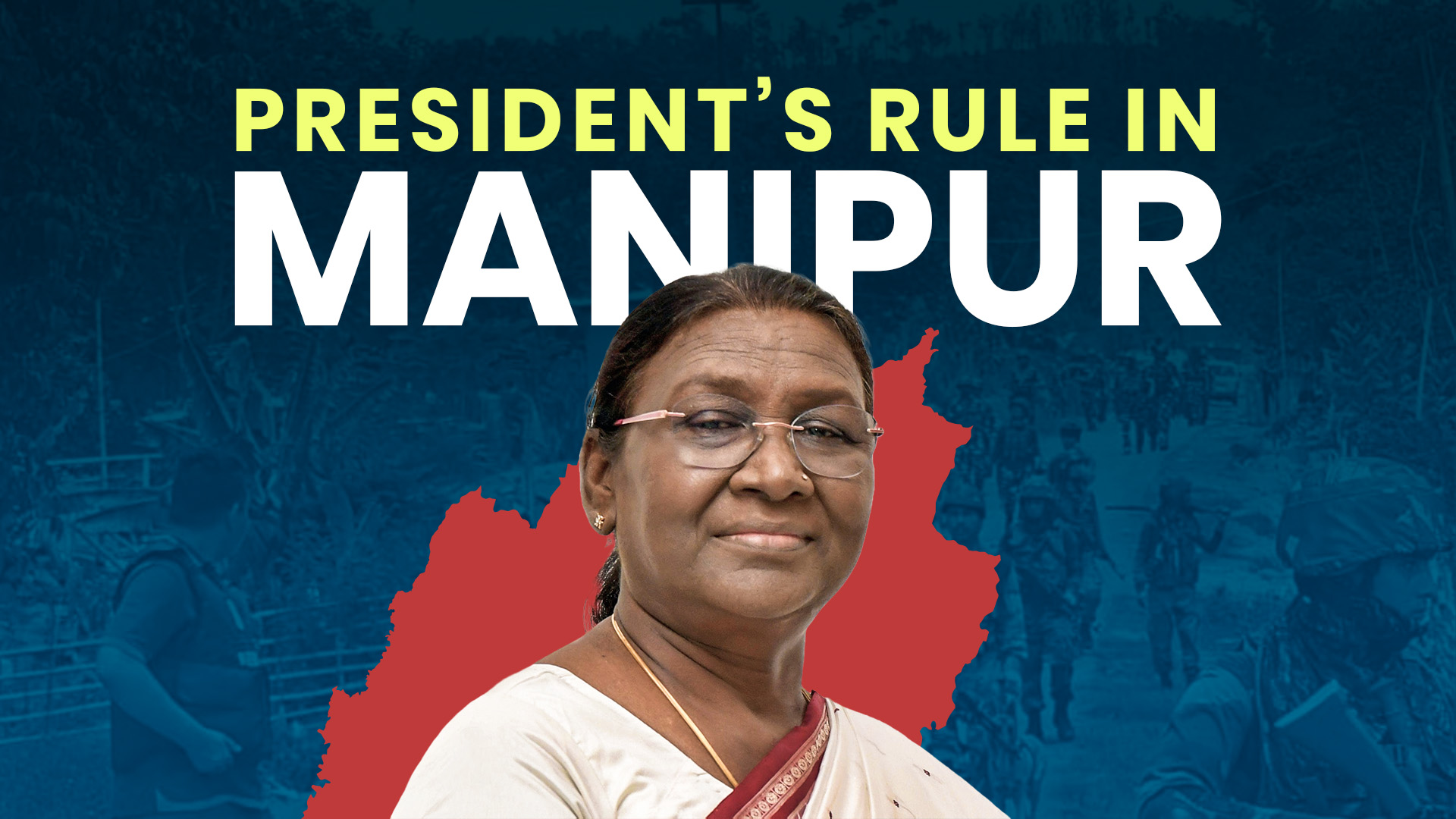Sociological Perspectives on President’s Rule in Manipur: Power, Conflict, and Federalism
The imposition of President’s Rule in Manipur reflects a complex interplay of ethnic conflict, political instability, and centralized governance, offering rich ground for sociological analysis through diverse theoretical lenses.
1. Conflict Perspective (Max Weber, Karl Marx)
The ethnic strife between Meiteis and Kukis underscores the conflict perspective, where power struggles over resources and political representation dominate. Weber’s emphasis on *legitimate domination* explains the erosion of state authority as competing groups reject the Meitei-led government’s legitimacy. Marx’s theory of the state as an instrument of class domination aligns with Kuki accusations of systemic marginalization under Biren Singh’s regime. For instance, Kuki demands for a separate administration reflect Marx’s assertion that *“the executive of the modern state is but a committee for managing the common affairs of the whole bourgeoisie”*[^1].2. Marxist Perspective (A.R. Desai)
A.R. Desai’s Marxist analysis highlights how central intervention serves capitalist interests by stabilizing regions for resource extraction. The BJP’s failure to resolve Manipur’s crisis mirrors Desai’s critique of the Indian state’s alignment with dominant classes. In *State and Society in India*, Desai argues that *“centralization of power often masks the bourgeoisie’s inability to address subnational contradictions”*[^2]. President’s Rule here exemplifies the Centre’s prioritization of political control over equitable governance.3. Structural Functionalism (Talcott Parsons, Robert K. Merton)
Parsons’ social system theory frames President’s Rule as a “latent function” to restore equilibrium after governance breakdown. Merton’s *strain theory* contextualizes the failure of Manipur’s institutions to mediate ethnic tensions, leading to anomie. The Governor’s report justifying central rule aligns with Parsons’ AGIL model, where adaptation (central intervention) replaces the state’s goal-attainment failure.4. Feminist Perspective (Patricia Hill Collins)
The displacement of 60,000+ individuals disproportionately impacts women, reflecting Collins’ matrix of domination. Meitei and Kuki women’s exclusion from peace talks exemplifies how patriarchal structures intersect with ethnic conflict. Collins’ assertion that *“power relations are never just about race or class but also gender”*[^3] underscores the invisibility of women’s agency in resolving Manipur’s crisis.5. Post-Structuralism (Michel Foucault)
Foucault’s governmentality reveals President’s Rule as a biopolitical tool to discipline dissent. The MHA’s direct control over Manipur’s administration exemplifies *“the conduct of conduct”*, where centralized surveillance (e.g., intelligence monitoring[5]) normalizes state authority. Foucault’s *Power/Knowledge* argues that *“political technologies transform populations into governable subjects”*[^4], evident in the BJP’s narrative framing President’s Rule as “necessary” despite local opposition[2][3].6. Indian Sociological Perspectives
- M.N. Srinivas (Dominant Caste): The Meitei majority’s political dominance aligns with Srinivas’ concept of dominant caste, where a group monopolizes resources and authority. Their resistance to Kuki autonomy reflects *Sanskritization* dynamics, preserving hegemony. - G.S. Ghurye (Indology): Ghurye’s tribal integration model contrasts with Manipur’s ethnic fragmentation, exposing failures in assimilating Kuki-Zo tribes into the mainstream[^5]. - Yogendra Singh (Modernization): Singh’s *Modernization of Indian Tradition* highlights the paradox of persistent ethnic identities despite institutional modernization, as seen in Manipur’s unresolved tribal-state tensions[6]. - B.R. Ambedkar (Legal Perspective): Ambedkar’s emphasis on constitutional morality critiques President’s Rule as a negation of federalism. His warning that *“centralization makes democracy a mere phrase”*[^6] resonates with COCOMI’s allegations of “military subjugation”[3].7. World-Systems Theory (Immanuel Wallerstein)
Wallerstein’s core-periphery model frames Manipur as a periphery exploited by the core (Delhi). The Centre’s imposition of President’s Rule reflects dependency theory, where “development” is imposed externally, exacerbating ethnic divisions. Kuki demands for separate statehood mirror peripheral resistance to core domination.8. Neo-Marxism (Antonio Gramsci)
Gramsci’s cultural hegemony explains the BJP’s ideological project to homogenize Manipur’s diversity. The Centre’s narrative of “law and order collapse” conceals hegemony maintenance, akin to Gramsci’s *“the ruling class justifies domination as universal interest”*[^7].Conclusion
President’s Rule in Manipur epitomizes the collision of ethnic identity, state power, and neoliberal governance. From Marxist critiques of centralization to feminist analyses of marginalized agency, sociological perspectives illuminate the crisis as a microcosm of India’s contested federalism. As Ambedkar cautioned, constitutional tools like Article 356 risk becoming *“a tyranny of the majority”* unless grounded in participatory democracy.References to Works
[^1]: Marx, K. *The Communist Manifesto*
[^2]: Desai, A.R. *State and Society in India*
[^3]: Collins, P.H. *Black Feminist Thought*
[^4]: Foucault, M. *Power/Knowledge*
[^5]: Srinivas, M.N. *The Dominant Caste and Other Essays*
[^6]: Ambedkar, B.R. *Annihilation of Caste*
[^7]: Gramsci, A. *Prison Notebooks*
Citations:
[1] https://pwonlyias.com/president-rule-article-356/
[2] https://swarajyamag.com/north-east/manipur-crisis-why-imposition-of-presidents-rule-has-angered-meiteis-and-emboldened-kuki-hardliners
[3] https://indianexpress.com/article/india/from-blatant-power-manoeuvre-to-long-overdue-varied-reactions-to-presidents-rule-across-manipurs-divide-9836918/
[4] https://www.nationalheraldindia.com/politics/presidents-rule-in-manipur-cong-says-only-after-social-fabric-severely-damaged
[5] https://indianexpress.com/article/upsc-current-affairs/upsc-key-presidents-rule-in-manipur-yalta-conference-and-human-animal-conflict-9836560/
[6] https://indianexpress.com/article/explained/explained-law/presidents-rule-manipur-what-is-the-provision-history-9830266/
[7] https://economictimes.com/news/india/what-triggered-imposition-of-presidents-rule-in-manipur/articleshow/118220499.cms
[8] https://e-pao.net/epSubPageSelector.asp?src=Explaining_the_11th_President_Rule_in_Manipur_By_Heigrujam_Premkumar&ch=education&sub1=Human_Rights_Legal
[9] https://www.nextias.com/ca/current-affairs/12-02-2025/manipur-unrest-raises-the-question-of-president-rule
[10] https://currentaffairs.khanglobalstudies.com/presidents-rule-in-manipur/
[11] https://www.youtube.com/watch?v=BapNXj-aoPg
[12] https://pwonlyias.com/current-affairs/presidents-rule-imposed-in-manipur/
[13] https://www.studyiq.com/articles/president-rule-in-manipur/
[14] https://swarajyamag.com/news-brief/with-no-consensus-on-new-cm-bjp-led-centre-imposes-presidents-rule-in-conflict-hit-manipur
[15] https://ddnews.gov.in/en/presidents-rule-imposed-in-manipur/
[16] https://visionias.in/current-affairs/news-today/2025-02-14/polity-and-governance/president-of-india-issued-proclamation-imposing-presidents-rule-in-manipur
[17] https://www.taxmanagementindia.com/visitor/detail_rss_feed.asp?ID=34056
[18] https://x.com/GauravGogoiAsm/status/1890673257398915322
[19] https://www.insightsonindia.com/2025/02/12/presidents-rule-3/
[20] https://ukhrultimes.com/poor-puppet-governance-forces-presidents-rule-in-manipur/
